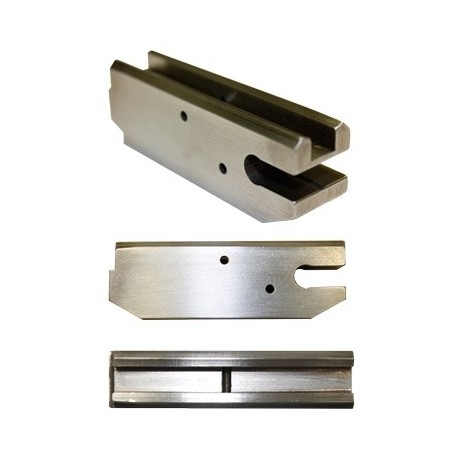


45 Colt barrel or through a special convert|21|in|mm|sing=on smoothbore shotgun barrel. 410 bore shotgun shells, either through the. Other makers pushed beyond the limits the factory set out, and did chamber Contender barrels in lighter. Jones line of JDJ cartridges, based on the. Custom gunmakers also added to the selection, such as the J. 308, was feasible because of the relatively low pressure to bolt face of the cartridge. 45-70, which although a much larger case that the. The largest factory caliber offered for the Contender was the. 357 Herretts and the various TCU cartridges, mostly based on the widely available. That prompted a boom in wildcat cartridges suitable for the Contender, such as the. The range of calibers available for the Contender were fairly limited, stopping short of the. Since the sights were mounted on the barrel, they stayed sighted in and would remain zeroed from change to change. Any barrel made for the Contender could fit onto any frame, allowing the shooter to purchase additional calibers for a fraction of the cost of a complete firearm. The true key to the Contender's success was that, unlike most other firearms actions, the break-open design did not require the barrels to be specially fitted to the individual action. Barrels were avaialable in lengths of 8, 10, 14, 16, and convert|21|in|mm. It was even possible to fit a shoulder stock on the frame, and when combined with a 16" or longer barrel (see Thompson Center Arms and the Supreme Court below) turn the contender from a pistol to a rifle. The Contender also had an adjustable trigger, which allowed the shooter to change both the take-up and overtravel, and go from a fairly heavy trigger pull, suitable for carrying the pistol while hunting, to a "hair trigger" for long range target shooting (see accurize). The Contender frames even had two firing pins, and a selector on the exposed hammer that allowed the shooter to choose between the rimfire and centerfire firing pins. This allowed easy changes of calibers, sights, and barrel lengths. A barrel of another caliber could be dropped in and pinned in place, the forend replaced, and the pistol would be ready to shoot with a different barrel and sights.

Since the sights and extractor went with the barrel, the frame itself had no cartridge specific features to it. By removing the forend stock, a large pin was exposed by pushing this pin out, the barrel could be removed. The first feature was the way the barrel was attached to the frame. The Contender pistol was a break-open single-shot pistol with a number of unique features that helped it become a huge success. Their break-open, single-shot design brought rifle-like accuracy and power in a handgun, which was a new concept at the time. Thompson/Center's success came with the emergence of long range handgun hunting and target shooting. On January 4, 2007, Thompson/Center was purchased by Smith & Wesson Holding Corporation. In 1970, Thompson/Center entered the black powder industry, which is what they are most known for these days. Thompson Tool began marketing Center's Contender pistol, they changed the company name to Thompson/Center Arms Company. Thompson Tool had been searching for a product to market, and Warren Center was looking for someone to manufacture his Contender pistol. Thompson/Center Arms when founded in 1965, by Warren Center and K.W. The company is best known for its line of interchangeable barrel single-shot pistols, and its muzzleloading rifles, though they have recently added a line of semiautomatic rimfire rifles. Thompson/Center Arms Company is an American firearms company based in Rochester, New Hampshire.


 0 kommentar(er)
0 kommentar(er)
